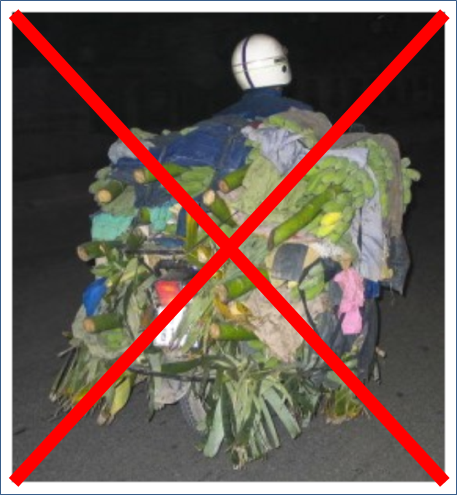 Loading Up Your Motorcycle for a Road Trip
Loading Up Your Motorcycle for a Road Trip
by Bard Boand
We aren’t going to talk about what to bring (that’s a topic for a another article) but HOW to load what you DO bring….
Low, Center, Tight and Secure is the key to carrying a month’s worth of stuff for your weekend get-a-way. Loading a motorcycle properly is very similar to getting the weight and balance factor correct on a cargo aircraft, or even a small plane. The CG, or center of gravity is critical for proper and safe flight, and on a motorcycle needs to be as close to the middle of the bike as possible, and as low on the bike as possible too.
Heavy tools should be in the front of the saddle bags, and on the bottom, NOT up in your tour pack on top of your rain gear. Rule of Thumb: All heavy items in the lower bags, light items in the tour pack. Items you may need to access in a hurry, like rain gear, should be on top in the bags or the tour pack. And, if you are traveling solo, favor using the rear seat area for storage of heavier luggage vs. the tour pack.
What you are trying to accomplish is the elimination of a “polar moment” caused by having excess weight hanging off the rear of the bike, which would aggravate handling and may cause the rear of the bike to come swinging around towards the front in a panic stop or in wet road conditions.
Speaking of wet conditions… use plastic garbage bags to wrap or cover stuff you want to stay dry. Even HD hard bags and tour packs sometimes leak.
Tie downs are an important part of packing!
ROK Straps vs. Bungee straps….https://www.rokstraps.com/index.html. Watch this video about ROK straps…I guarantee once you’ve used a ROK strap you will never use a bungee again. They are safer, tighter, adjustable, and the only way to fasten a load securely.
Oh, did I say, don’t bring so much? The tendency is to over pack. Do you really need 6 tee shirts knowing you’re going to buy 3 or 4 tee’s while at Sturgis? Also, think of using the Post Office, UPS or FedEx to ship extra stuff home the day before you leave. All three have a variety of boxes you can choose from.
BEFORE departure, pre-load your bike and go for a 10 mile ride and cross a few RR tracks and hit some bumps. Then back in your garage see what came loose and shifted…surprise, surprise, surprise. Also, pay close attention to recommended tire pressure and shock absorber settings and air pressure as outlined in your owner’s manual for heavier loads. Recommended settings and pressures are much different for a fully loaded up bike.
Now… Have a nice trip!





